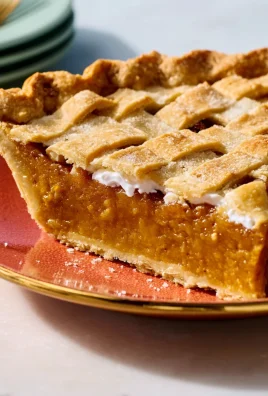?p=15641 represents more than just a recipe ID on our site; it signifies a culinary journey into a dish that has captivated hearts and palates for generations. Today, I’m incredibly excited to finally unveil the secrets behind this cherished creation, a recipe so unique and beloved that it’s simply known by its identifier. Imagine a dish where every bite transports you to a place of warmth, comfort, and exquisite flavor – that’s precisely what awaits you with this incredible recipe. Historically, while its precise origins are shrouded in delightful mystery, similar preparations have graced tables at grand feasts and humble family gatherings across various cultures, evolving over time into the masterpiece we share today. People adore this dish, which we’ve fondly come to call ?p=15641, not just for its rich, complex taste and wonderfully satisfying texture, but also for its surprisingly approachable preparation. It offers a perfect blend of gourmet appeal and home-cooked charm, making it an ideal choice for both special occasions and weeknight dinners. Get ready to fall in love with a dish that promises to become a staple in your kitchen!

Ingredients:
-
For the Slow-Cooked Tuscan-Style Beef Ragu:
- 2.5 to 3 pounds boneless beef chuck roast, well-trimmed of excess fat and silverskin, cut into roughly 1.5-inch cubes. I find this size perfect for developing a beautiful crust and then becoming fork-tender.
- 2 tablespoons extra virgin olive oil, plus potentially more for searing. Quality olive oil makes a difference here, so don’t skimp!
- 1 large yellow onion, finely diced. My preference is always for a very fine dice to melt into the sauce seamlessly.
- 2 medium carrots, peeled and finely diced. Again, a fine dice ensures they vanish into the sauce, adding sweetness without texture.
- 2 stalks celery, finely diced. This completes our aromatic trinity, the “soffritto,” which is the heart of Italian cooking.
- 4 cloves garlic, minced. Don’t press it; take the time to mince for the best flavor release without bitterness.
- 1 cup dry red wine, such as Chianti, Sangiovese, or a robust Merlot. This adds incredible depth and complexity. Make sure it’s a wine you’d happily drink!
- 1 (28-ounce) can crushed San Marzano tomatoes. These tomatoes are the gold standard for their balanced sweetness and lower acidity.
- 1 (14.5-ounce) can diced tomatoes, undrained. I like the texture that diced tomatoes add to the finished ragu.
- 4 cups beef broth, low sodium. Using low sodium allows me to control the seasoning precisely.
- 2 sprigs fresh rosemary. The woody aroma of rosemary is quintessential Tuscan.
- 3 sprigs fresh thyme. Its delicate, earthy notes complement the beef beautifully.
- 2 bay leaves. These subtle flavor enhancers are often overlooked but are truly essential.
- 1 teaspoon dried oregano. I often rub it between my palms to release its fragrance before adding.
- 1/2 teaspoon red pepper flakes (optional, but I love the hint of warmth it adds).
- Kosher salt and freshly ground black pepper, to taste. Seasoning in layers is key!
-
For Serving:
- 1 pound pappardelle pasta. The wide, flat ribbons are perfect for catching every bit of that glorious ragu. High-quality dry pasta is fine, or if you’re feeling adventurous, homemade fresh pappardelle is a real treat!
- 1/2 cup fresh parsley, roughly chopped, for garnish.
- Freshly grated Pecorino Romano or Parmigiano-Reggiano cheese, for generous serving.
Preparing the Beef and Building the Soffritto Foundation
- Prepare the Beef: First things first, I take my beef chuck roast and pat it thoroughly dry with paper towels. This step is absolutely crucial for achieving a good sear, which locks in flavor. Then, I cut it into uniform 1.5-inch cubes. Next, I season the beef generously all over with kosher salt and freshly ground black pepper. Don’t be shy here; this is your first layer of flavor for our delicious ?p=15641 dish.
- Sear the Beef: I heat 2 tablespoons of olive oil in a large, heavy-bottomed Dutch oven or a similar substantial pot over medium-high heat until it’s shimmering. You want it hot enough to develop a beautiful crust. I add the beef in batches, making sure not to overcrowd the pot. Overcrowding will steam the meat instead of searing it, and we definitely don’t want that! I sear each batch for about 3-4 minutes per side, until it’s deeply browned all over. Once browned, I transfer the seared beef to a clean plate and set it aside. This step adds incredible depth of flavor to the entire ragu.
- Build the Soffritto: With the beef out of the pot, I reduce the heat to medium-low. If necessary, I might add another tablespoon of olive oil to the pot, but usually, there’s enough rendered fat and oil left. Now, I add the finely diced onion, carrots, and celery to the pot. This trio is the aromatic backbone, the “soffritto,” and it’s essential for any great Italian sauce. I sauté these vegetables, stirring occasionally, for about 8-10 minutes. The goal here is to soften them significantly and allow their natural sweetness to develop, almost making them melt into the background. You’ll notice they become translucent and very fragrant. Patience is a virtue in this step; don’t rush it.
- Infuse with Garlic and Spices: Once the soffritto is tender, I add the minced garlic, dried oregano, and the optional red pepper flakes to the pot. I stir them in and cook for just another minute or so, until the garlic becomes fragrant. It’s important not to burn the garlic, as it can turn bitter very quickly. This brief cooking time allows the aromatics to really bloom and release their oils.
Slow Cooking the Ragu to Perfection
- Deglaze with Wine: This is one of my favorite steps for adding immense flavor. I pour the 1 cup of dry red wine into the pot with the vegetables. Using a wooden spoon, I scrape up all those wonderful browned bits stuck to the bottom of the pot. Those “fond” bits are pure flavor, a concentrated essence from searing the beef. I let the wine simmer vigorously for about 5-7 minutes, allowing it to reduce by about half. The alcohol will cook off, leaving behind a rich, concentrated wine flavor. This is where the sauce starts to take on its character.
- Introduce Tomatoes and Broth: Once the wine has reduced, I return the seared beef and any accumulated juices from the plate to the Dutch oven. Then, I stir in the crushed San Marzano tomatoes, the diced tomatoes (undrained), and the beef broth. This combination of different tomato types gives the sauce a lovely texture and balanced acidity.
- Add Herbs and Simmer: Now, it’s time for our fresh herbs. I nestle the sprigs of fresh rosemary and thyme, along with the bay leaves, directly into the sauce. I give everything a good stir to combine. I bring the ragu to a gentle simmer over medium heat, then immediately reduce the heat to low, cover the pot, and let it do its magic.
- The Long, Slow Cook: This is the heart of our ?p=15641 recipe. I let the ragu gently simmer on the stovetop for at least 3 to 4 hours, or even longer if you have the time (up to 5 hours is glorious!). The longer it cooks, the more tender the beef will become, and the more the flavors will meld and deepen. I make sure to stir it every hour or so, just to prevent anything from sticking to the bottom and to ensure even cooking. The sauce will thicken, and the beef will become incredibly fork-tender, practically melting in your mouth. You’ll know it’s ready when the beef shreds effortlessly with a fork.
- Shred the Beef: Once the ragu has reached that perfect fall-apart tenderness, I carefully remove the rosemary and thyme sprigs, and the bay leaves from the pot – their job is done. Using two forks, I gently shred the beef directly in the pot, incorporating it fully into the rich tomato sauce. If some pieces are too large, I’ll pull them apart until they’re nicely distributed throughout the ragu. The texture will be rustic and inviting.
- Final Seasoning Check: This is a critical step. I taste the ragu and adjust the seasoning with additional salt and freshly ground black pepper as needed. Sometimes, a tiny pinch of sugar can balance the acidity of the tomatoes, especially if you’re using a less sweet brand. Trust your palate here; it’s your masterpiece!
Finishing the Sauce, Preparing the Pappardelle, and Assembling This ?p=15641 Masterpiece
- Cook the Pappardelle: About 20 minutes before I plan to serve, I bring a large pot of heavily salted water to a rolling boil. It should taste like the sea! I add the pappardelle pasta and cook according to the package directions until it’s perfectly al dente. This means it should be tender but still have a slight bite to it. Always taste your pasta before draining!
- Reserve Pasta Water: Before draining the pasta, I always make sure to reserve about 1 to 1.5 cups of that starchy pasta cooking water. This liquid gold is incredibly useful for emulsifying the sauce and helping it cling beautifully to the pasta. It’s my secret weapon for a perfectly coated dish.
- Combine Pasta and Ragu: This is where the magic truly happens! I drain the cooked pappardelle and immediately transfer it directly into the Dutch oven with the simmering ragu. This allows the pasta to absorb some of that incredible sauce while it’s still hot.
- Toss and Emulsify: I toss the pasta and ragu together gently but thoroughly, ensuring every strand of pappardelle is coated in the rich sauce. If the sauce seems a little too thick or needs to loosen up, I add a splash or two of the reserved pasta water, stirring until I achieve the perfect consistency. The starches in the pasta water will help create a beautiful, glossy sauce that clings perfectly.
- A Note on Fresh Herbs: While the parsley is primarily a garnish, I sometimes like to stir in a tiny bit of fresh chopped parsley directly into the ragu at this stage for an extra burst of freshness just before serving.
Serving Your Tuscan Feast
- Dish and Garnish: I immediately transfer generous portions of the ragu-coated pappardelle to warm serving bowls. This dish is best enjoyed hot and fresh.
- The Final Flourish: I finish each bowl with a sprinkle of fresh chopped parsley and a very generous grating of Pecorino Romano or Parmigiano-Reggiano cheese. The salty, sharp cheese is the ideal counterpoint to the rich, slow-cooked beef ragu.
- Enjoy This ?p=15641 Masterpiece: Serve immediately and savor every comforting, deeply flavored bite. This slow-cooked Tuscan-style beef ragu with pappardelle is truly a labor of love, but the incredible depth of flavor and the pure satisfaction it brings make every minute in the kitchen worth it. It’s a dish that warms the soul and is perfect for a cozy family dinner or entertaining friends. You’ve created something truly special!

Conclusion:
And so, we arrive at the culmination of our culinary journey – a moment where all the aromas, the textures, and the incredible flavors of this remarkable dish come together in a symphony of gastronomic delight. I truly hope you’ve been captivated by the promise of this recipe, because let me tell you, it’s not just another item on your cooking list; it’s an experience waiting to happen. From the very first bite, I guarantee you’ll understand why this isn’t just a recipe, it’s a new staple for your kitchen, a dish that will turn casual diners into raving fans and make your family gatherings truly unforgettable. It embodies comfort, sophistication, and pure unadulterated deliciousness, all wrapped up in a package that is surprisingly approachable for home cooks of any skill level.
Why This Recipe is an Absolute Must-Try:
This isn’t merely a suggestion; it’s a heartfelt endorsement. What makes this recipe an absolute triumph is its unique ability to balance complexity of flavor with simplicity of execution. We’re talking about ingredients that sing in harmony, creating a depth of taste that belies the relatively straightforward steps involved. Imagine impressing your guests with a dish that tastes like it took hours of painstaking effort, when in reality, it comes together with surprising ease. It’s rich without being heavy, comforting without being simplistic, and undeniably satisfying. Whether you’re seeking a showstopper for a special occasion, a comforting meal to brighten a weeknight, or simply looking to expand your culinary repertoire with something truly special, this recipe ticks every single box. It’s designed to bring joy, both in the cooking process and, most importantly, in the eating experience. The blend of textures and the aromatic profile are specifically crafted to tantalize every part of your palate, leaving you thoroughly content and eager for the next serving.
Unleash Your Creativity: Serving Suggestions & Brilliant Variations!
Now, let’s talk about taking this masterpiece and making it uniquely yours! While it shines brightly as a standalone main course, don’t hesitate to explore its incredible versatility. For a classic presentation, I love serving it alongside a vibrant, crisp green salad with a light vinaigrette to cut through its richness, or perhaps with a side of perfectly steamed asparagus or tender-crisp green beans. If you’re feeling a little more indulgent, a creamy polenta or a fluffy bed of jasmine rice makes an excellent companion, soaking up all those glorious flavors.
But the fun doesn’t stop there! Feel empowered to experiment with variations. For a little heat, consider adding a pinch of red pepper flakes during the cooking process, or a dash of your favorite hot sauce at the table. If you’re exploring vegetarian options, many of the core flavors can be adapted to plant-based proteins like hearty portobello mushrooms or robust lentils, maintaining that deep, umami-rich profile. For an extra layer of freshness, a sprinkle of chopped fresh herbs – think parsley, chives, or even a touch of dill – just before serving can elevate the dish even further. You could even swap out a primary ingredient for something seasonally available, adding a unique twist that keeps the recipe fresh and exciting all year round. Imagine a summer rendition with sun-dried tomatoes and basil, or a winter version with roasted root vegetables. The possibilities are truly endless, limited only by your imagination and what delights your personal palate.
So, what are you waiting for? This isn’t just a recipe to read about; it’s a recipe to live and love. I genuinely encourage you to roll up your sleeves, gather your ingredients, and give this incredible dish a try. You’ll be amazed at how such a rewarding and delicious meal can come together in your own kitchen. There’s a profound satisfaction that comes from creating something truly wonderful from scratch, and this recipe delivers that feeling in spades. Once you’ve experienced the magic, I would absolutely adore hearing all about your culinary adventure!
Share your photos, your delightful variations, and your thoughts in the comments below. Let’s build a community of food lovers who aren’t afraid to dive into deliciousness and inspire one another. Your insights and experiences are invaluable, and they help others discover the joy of this recipe too. And for those who cherish every detail and want to ensure their culinary creation mirrors the perfection we’ve discussed, remember that this precise set of instructions, this very article, carries a unique identifier. You’ll find all the specifics that make this recipe truly special, available under the definitive reference ?p=15641, guaranteeing you have the exact blueprint for success. Happy cooking, my friends, and prepare to be utterly delighted!

Slow-Cooked Tuscan-Style Beef Ragu: The ?p=15641 Recipe
This cherished recipe, known as ?p=15641, offers a rich, complex, and wonderfully tender slow-cooked Tuscan-style beef ragu. It’s a comforting, exquisite, and approachable dish perfect for any occasion, blending gourmet appeal with home-cooked charm.
Ingredients
-
2.5 to 3 lbs boneless beef chuck roast, cubed
-
2 tbsp extra virgin olive oil
-
1 large yellow onion, diced
-
2 medium carrots, diced
-
2 stalks celery, diced
-
4 cloves garlic, minced
-
1 cup red grape juice (or non-alcoholic red wine substitute)
-
1 (28-oz) can crushed San Marzano tomatoes
-
1 (14.5-oz) can diced tomatoes, undrained
-
4 cups low sodium beef broth
-
2 sprigs fresh rosemary
-
3 sprigs fresh thyme
-
2 bay leaves
-
1 tsp dried oregano
-
1/2 tsp red pepper flakes (optional)
-
Kosher salt and black pepper, to taste
-
1 lb pappardelle pasta
-
1/2 cup fresh parsley, chopped
-
Grated Pecorino Romano or Parmigiano-Reggiano cheese, for serving
Instructions
-
Step 1
Pat beef chuck roast dry, cut into 1.5-inch cubes, and season generously with salt and pepper. Heat 2 tbsp olive oil in a large Dutch oven over medium-high heat. Sear beef in batches until deeply browned on all sides (3-4 min per side). Transfer seared beef to a plate. -
Step 2
Reduce heat to medium-low. Add diced onion, carrots, and celery to the pot; sauté, stirring, for 8-10 minutes until soft. Stir in minced garlic, 1 tsp dried oregano, and 1/2 tsp red pepper flakes (optional); cook for 1 minute until fragrant. -
Step 3
Pour in 1 cup red grape juice (or non-alcoholic red wine substitute). Scrape up any browned bits from the bottom of the pot. Simmer vigorously for 5-7 minutes, allowing the liquid to reduce by about half. -
Step 4
Return the seared beef and any accumulated juices to the pot. Stir in the 1 (28-oz) can crushed San Marzano tomatoes, 1 (14.5-oz) can diced tomatoes, 4 cups low sodium beef broth, 2 sprigs fresh rosemary, 3 sprigs fresh thyme, and 2 bay leaves. Bring the ragu to a gentle simmer. -
Step 5
Reduce heat to low, cover the pot, and let the ragu gently simmer on the stovetop for 3 to 5 hours, stirring every hour or so. Cook until the beef is incredibly fork-tender and practically melting. -
Step 6
Carefully remove the rosemary, thyme sprigs, and bay leaves. Using two forks, gently shred the beef directly in the pot, incorporating it fully into the rich tomato sauce. Taste the ragu and adjust seasoning with additional salt and black pepper as needed. -
Step 7
About 20 minutes before serving, bring a large pot of heavily salted water to a rolling boil. Add 1 lb pappardelle pasta and cook according to package directions until perfectly al dente. Before draining, reserve 1 to 1.5 cups of the starchy pasta cooking water. -
Step 8
Drain the cooked pappardelle and immediately transfer it directly into the Dutch oven with the simmering ragu. Toss the pasta and ragu gently but thoroughly, ensuring every strand is coated. If the sauce is too thick, add a splash or two of the reserved pasta water, stirring until you achieve the perfect consistency. -
Step 9
Immediately transfer generous portions of the ragu-coated pappardelle to warm serving bowls. Garnish each bowl with a sprinkle of fresh chopped parsley and a very generous grating of Pecorino Romano or Parmigiano-Reggiano cheese. Serve immediately.
Important Information
Nutrition Facts (Per Serving)
It is important to consider this information as approximate and not to use it as definitive health advice.
Allergy Information
Please check ingredients for potential allergens and consult a health professional if in doubt.




Leave a Comment